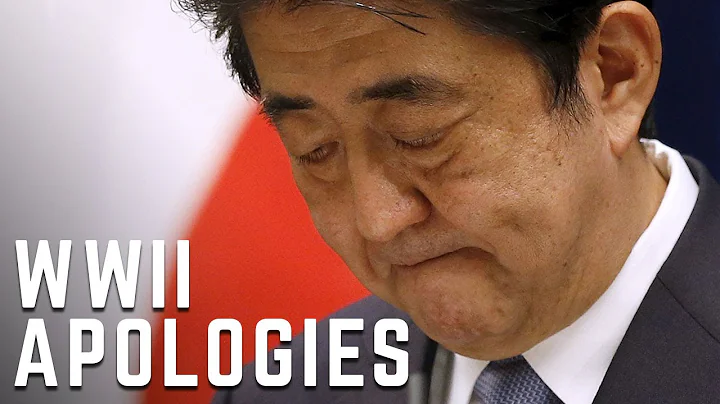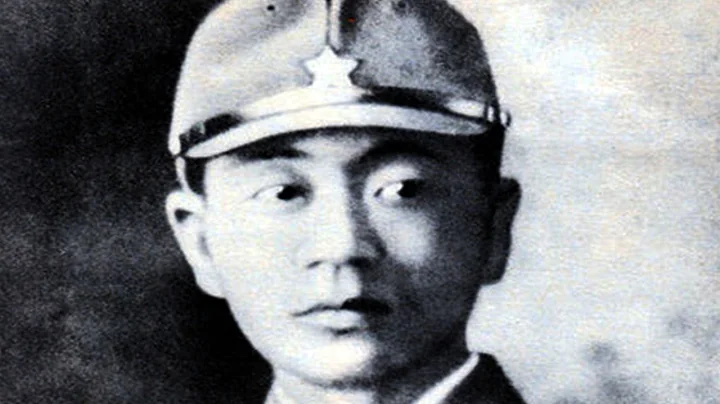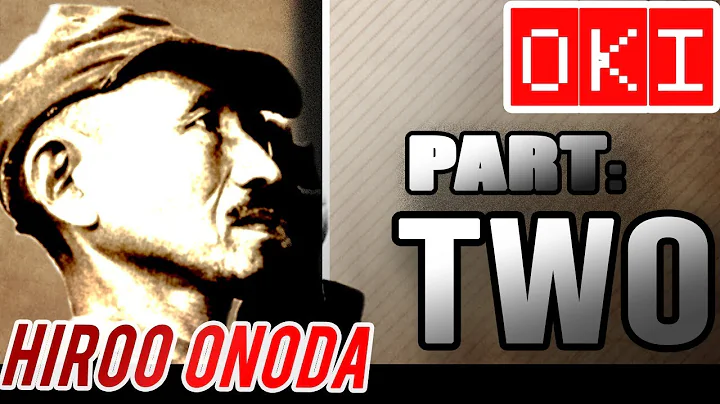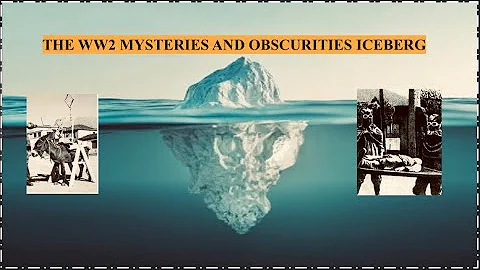
Hiroyuki Onoda surrendered to the Philippine military
What you are seeing now is the real historical photo of Hiriro Onoda, the "last Japanese soldier", who surrendered to the Philippine military on March 11, 1974. At this time, it was already World War II Japan surrendered. A full 29 years have passed.

Onoda Hirō
Onoda Hirō was born on March 19, 1922, in Hainan City, Wakayama Prefecture, Japan. When he was young, he was selected to work with the Japanese Chamber of Commerce in Wuhan, China because of his excellent academic performance and proficiency in Chinese. Later, due to Japan's massive invasion of China and the tight war situation, he was drafted into the army and participated in many mopping up operations in central China. As time went by, the Japanese army expanded indefinitely in Asia, seriously affecting the vested interests of the United States, and was severely blocked and counterattacked by the United States. The Japanese military also had to send additional troops to defend Southeast Asian countries to fight against the US military.

In mid-November 1944, Hiriro Onoda was also sent to Lubang Island in the Philippines for garrison duty. At the same time, the U.S. military's fierce offensive also the Japanese navy retreated steadily, and was about to endanger Japan's mainland. The large forces defending the islands had to be transferred back to Japan's mainland defense, but the Japanese army's ambition was still alive, so a small group was left behind. The Japanese army continued guerrilla operations on the island, waiting for the Japanese army to come back. Among them, Onoda Hiroshi was one of the remaining soldiers and served as the team leader. In order to allow the remaining soldiers to better compete with the US military, Onoda's boss Yoshimi Taniguchi lied to Onoda Hiroshi: "Now the large forces are going to other places for support, and ordered Onoda to continue to lead the team to fight guerrillas against the enemy in the mountains, and wait. During the return of the large army, no soldier is allowed to commit suicide or surrender, and only he himself can cancel the order issued today." After the large army left, Onoda took the small group deep into the mountains as promised, but this was not the case. I waited for 29 years. During this period, the Philippine military sent troops to encircle Onoda's team many times. Until Onoda's team fought until Onoda was the only one left, Onoda was still unwilling to surrender. The U.S. and Philippine military had no choice but to send planes to drop a large number of leaflets to inform Onoda that Japan had surrendered and asked him to lay down his weapons and walk out of the jungle. However, in the cautious Onoda's view, this was an American conspiracy. Even Onoda's father and brother personally He came to the scene and shouted to him, but he still failed to sway Onoda's doubts.
In 1974, news of Onoda's guerrilla activities on Lubang Island in the Philippines reached Japan. People from all walks of life in Japan paid great attention to it. On February 20, Japanese explorer Norio Suzuki came to Lubang Island where Onoda was located alone to find out. When Norio was resting in a tent deep in the forest, Onoda saw the eye-catching Japanese flag on the tent and immediately stepped forward to ask. Norio Suzuki was sincerely happy to see Onoda's arrival and said to Onoda: "Japan has really surrendered. The war is already over." Onoda was still 99% doubtful and 1% confused about Suzuki Norio's words. Onoda told Suzuki Norio that he would not surrender even if he fought to the death without the commander's order. Norio Suzuki had no choice but to take a photo of Onoda and leave.

Norio Suzuki and Hiroshi Onoda
Norio Suzuki, who returned to Japan, informed the Japanese government of Onoda's deeds. The Japanese government went through various files and finally found Onoda's boss Yoshimi Taniguchi. On March 9, 1974, under the arrangement of the Japanese government, Yoshimi Taniguchi came to the jungle where Onoda was hiding, and continued to shout to Onoda with a loudspeaker. After hearing the news, Onoda came fully armed and saw that it was indeed herself. His old boss, Yoshimi Taniguchi, Onoda put down his weapon and knelt down in front of Yoshimi Taniguchi with tears on his face. After a brief greeting, the skinny old second lieutenant Hiroshi Onoda accepted Taniguchi with the highest standard of salute in front of his superior. Yimei's surrender order ended his 29-year guerrilla career.

Hiroro Onoda surrendered
In the early morning of March 10, 1974, Onoda, who was facing doubts, handed over his sword to the Philippine military and expressed his willingness to surrender. However, something surprising happened. The originally solemn and heavy surrender ceremony was interrupted by the Philippine government. It turned into a large and cheerful holiday party, and the venue was full of guests and lively. The Philippine commander praised Onoda and praised him as an example of soldier loyalty. Philippine Presidents Ferdinand and Marcos also announced on the spot that they had pardoned Hiroshi Onoda for his crimes. , This shocked Onoda, who massacred hundreds of Filipinos, and surprised him.

Hiroy Onoda's joy in returning to Japan
On March 12, Onoda returned to Japan by plane after decades of absence. He received a grand welcome from the people as soon as he got off the plane. When a reporter asked you about spending the most precious thirty years of your life in the forest, what impact did it have on your life? After thinking deeply, Onoda Hiriro replied: "I think it is a blessing to be able to devote myself to fighting for the country at the best age in one's life." There was no remorse for past actions in his words.
After returning to Japan, Onoda, instigated by Japanese right-wingers, actively participated in activities to beautify Japan's war of aggression. He also rejected the Japanese government's sky-high consolation money and denied Emperor Hirohito's surrender in 1945. With the support of the Japanese right wing, Onoda also wrote a book called "Never Surrender: My Thirty Years War". This book quickly became popular among all walks of life in Japan and became one of the best-selling books at the time. Onoda also earned a fortune for this earned a lot.

Hiroyuki Onoda's books
When the hustle and bustle passed, Onoda, who had been prosperous for a year, could not integrate into Japanese society except for showing off the war. This made him feel very confused. Under the introduction of his second brother Onoda Grand, Onoda left for a foreign country. When Onoda came to Brazil , when Onoda came to the vast Brazilian countryside, the silent land reminded him of the scene when he was a guerrilla in the Philippines. Onoda immediately made up his mind to immigrate to Brazil and use all his savings to open a business in Brazil. He started a cattle ranch, perhaps during the guerrilla war in the Philippines, and cattle stealing became a regular practice. He knew the life of cattle very well, and the ranch he started was very successful, and he became a famous local entrepreneur.

Hiroy Onoda in Brazil
In his later years, Onoda often had nightmares, often dreaming of cruel scenes of guerrilla fighting, so he decided to revisit his hometown. In 1996, Onoda returned to Lubang Island in the Philippines in the name of charity and donated a Ten thousand US dollars were used to build schools. However, when the accompanying staff asked: "Do you feel guilty about the heavy disasters you have brought to many families in the Philippines during your 29 years of guerrilla career?" Onoda casually said: "It is the bounden duty of a soldier to persist in fighting. I have no personal responsibility." Faced with Onoda's words, I don't know how the Filipinos felt at the time.

Hiroyuki Onoda returned to Lubang Island in the Philippines for the second time
On January 16, 2014, Hiroshi Onoda died of pneumonia in a hospital in Tokyo, ending his controversial life. From Onoda's deeds, people can't help but think about it. Japanese bushido militarism is deeply rooted in the hearts of the Japanese people, and the seeds of war of aggression are always there. Maybe one day Japanese militarism will still bring endless suffering to the people of the world?





![Unaware of WWII's End, Japanese Soldier Fought On for 10,000 Days Against USA. [Movie Recap] - DayDayNews](https://i.ytimg.com/vi/OQjOZk-YbDg/hq720.jpg?sqp=-oaymwEcCNAFEJQDSFXyq4qpAw4IARUAAIhCGAFwAcABBg==&rs=AOn4CLDd5T0CL7Kx2r32uCvDSgQoW2XqxQ)















